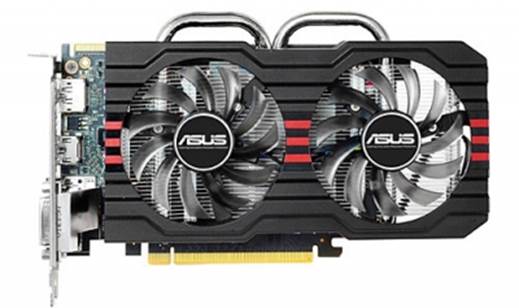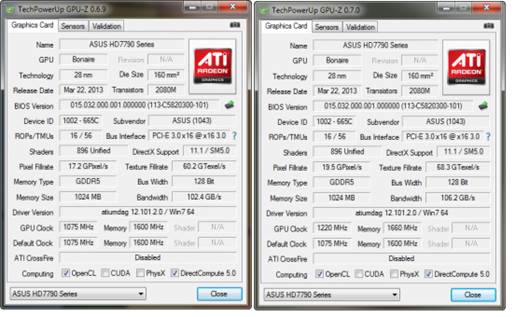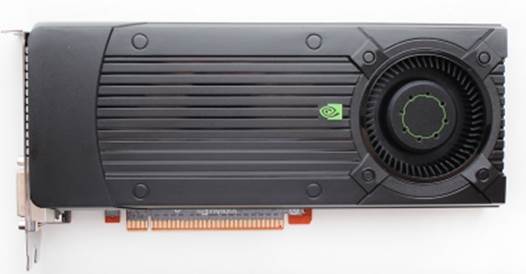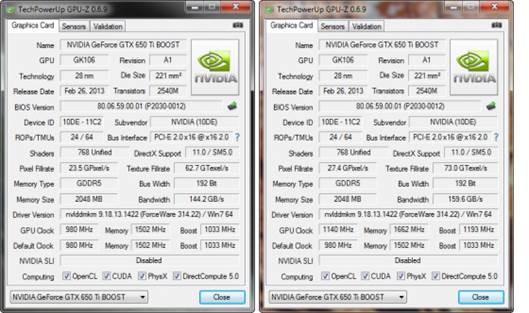Two new graphics cards in the entry-level
price segment step in a fierce competition with each other. Which product will
take the lead?
In 2012 AMD and Nvidia, the two leading
developers of GPUs for discrete graphics cards, did everything to launch
complete line-ups of new products to their users. Both were ready to offer a
solution for any budget. Furthermore, Nvidia has recently improved its position
in the high price segment by releasing GeForce GTX Titan while AMD has
responded with dual processor Radeon HD 7990. In this review we will not talk
about superior products but will focus instead on the most important
entry-level market segment.
Until recently, AMD had a gap in its
product range The company released Radeon HD 7770 GHz $110 (Cape Verde XT
processor) and Radeon HD 7850 (Pitcairn Pro) $190 which differed by over 50% in
performance. Of course, there existed a 1GB version of the Radeon HD 7850 at
around $160, but it never became popular for some reasons. That's why AMD has
launched the Radeon HD 7790 with Bonaire processor at $149-169. We will have a
closer look at this product in a specific review. In this review, we will limit
ourselves to checking out its performance level.
Nvidia's product line seems more balanced,
without any gap in both performance and price Despite this fact, the company
has decided to meet the launch of the Radeon HD 7790 with a new product. It's
called the GeForce GTX 650 Ti Boost and it comes at a recommended $149 for a
1GB version or $169 for a 2GB version. Let's see if the two graphics cards can
be compared with each other and how they stand in comparison with the HD 7770
and GTX 650 Ti on one hand and with the HD 7850 and GTX 660 on the other hand.
Technical standard
The specifications of the AMD Radeon HD
7790 and NVIDIA GeForce GTX 650 Ti Boost are listed in the following table in
comparison with AMD Radeon HD 7850/7770 and NVIDIA GeForce GTX 660/650 Ti:
AMD
Radeon HD 7790 specifications
·
Graphics processor: Bonaire (TSMC)
·
Production process, nm: 28 (low-k)
·
Die size, mm2: 160
·
Transistors, min: 2,080
·
GPU frequency, MHz: 3D: 1,000, 2D: 300
·
Unified shader processors: 896
·
Texturing units: 56
·
Rasterization units (ROPs): 16
·
Max, theoretical fillrate, Gpixels/s: 16
·
Max, theoretical texture sampling rate,
Gtexels/s: 55.1
·
Pixel Shaders/Vertex Shaders: 5.0/5.0
·
Supported memory type: GDDRS
·
Effective video memory frequency, MHz: 3D: 6,000,
2D: 600
·
Memory size, MB: 1,024/2,048
·
Memory bus width, bit: 128
·
Memory bus bandwidth, GB/s:96.0
·
Peak power consumption, w: 3D: 85, 2D: 3
·
PSU requirements, W: 500
·
Reference PCB dimensions (L*W*M), mm: 211×100×38
·
Interface: PCI-Express×16 (v3.0)
·
Uots: DVI-I(Dual-Link), HDMI v1, 4a, DisplayPort
v1.2
·
MSRP/ min retail price, USD: $149/$169
NVIDIA GeForce GTX 650 Ti Boost specifications
·
Graphics processor: GK106 “Kepler” (TSMC)
·
Production process, nm: 28 (low-k)
·
Die size, mm2: 221
·
Transistors, min: 2,540
·
GPU frequency, MHz: 3D: 980 (1,033-boost), 2D:
324
·
Unified shader processors: 768
·
Texturing units: 64
·
Rasterization units (ROPs): 24
·
Max, theoretical fillrate, Gpixels/s :23.5
·
Max, theoretical texture sampling rate,
Gtexels/s: 62.7
·
Pixel Shaders/Vertex Shaders: 5.0/5.0
·
Supported memory type: GDDRS
·
Effective video memory frequency, MHz: 3D: 6008,
2D: 648
·
Memory size, MB: 1024/2048
·
Memory bus width, bit: 192
·
Memory bus bandwidth, GB/s: 144.2
·
Peak power consumption, w: 3D: 134, 2D: no data
·
PSU requirements, W: 450
·
Reference PCB dimensions (L*W*M), mm: 241×100×38
·
Interface: PCI-Express×16 (v3.0)
·
Uots: DVI-I + DVI-D (Dual-link), mini HDMI v1.4a
·
MSRP/ min retail price, USD: $129/$169
Testing configuration and methodology
All participating graphics cards were
tested in a system with the following configuration:
·
Motherboard: Intel Siler DX79SI (Intel X79
Express, LGA 2011, BIOS 0553 from 10/27/2012)
·
CPU: Intel Core i7-3970X Extreme Edition,
3.5/4.0 GHz (Sandy Bridge-E, C2, 1.1 V, 2 x 256 KB L2, 15 MB L3)
·
CPU cooler: Phanteks PH-TC14PE (Quạt 2 x Corsair
AF140 at 900 RPM);
·
Thermal interface: ARCTIC MX-4
·
Graphics cards:
ü HIS
7850 IceQ Turbo X 2 GB
ü Asus
HD 7790 DirectCU II 1 OC GB (HD7790-DC2OC-1GD5)
ü AMD Radeon
HD 7770 GHz Edition 1 GB
ü Asus
GeForce GTX 660 DirectCU II OC 2 GB
ü Nvidia
GeForce GTX 650 Ti BOOST 2 GB
ü Gigabyte
GeForce GTX 650 Ti 2 GB
·
System memory: DDR3 4 x 4GB Mushkin Redline
(Spec: 2133 MHz/ 9-11-10-28/ 1.65 V)
·
System hard drive: Crucial m4 256 GB SSD (SATA-III,CT256M4SSD2,
BIOS v0009)
·
Drive for programs and games: Western Digital
VelociRaptor (300GB, SATA-II, 10,000 RPM, 16MB cache, NCQ) inside Scythe Quiet
Drive 3.5’’ HDD silencer and cooler
·
Backup drive: Samsung Ecogreen F4 HD204UI
?(SATA-II, 2 TB, 5,400 RPM, 32 MB, NCQ);
·
System case: Antec Twelve Hundred (front panel:
three Noiseblocker NB-Multiframe S-Series MF12-S2 fans at 1,020 RPM; back
panel: two Noiseblocker NB-BlackSilentPRO PL-1 fans at 1,020 RPM; top panel: standard
200 mm fan at 400 RPM)
·
Control panel: Zalman ZM-MFC3
·
Power supply: Corsair AX1200i 1,200 W (with a
default 120 mm fan)
·
Screen 27” Samsung S27A850D (DVI-I, 2560x1440,
60 Hz)
We’re already
preparing two large reviews of off-the-shelf Radeon HD 7790 and GeForce GTX 650
Ti Boost, so we will limit ourself in their pictures and specs only.

ASUS
Radeon HD 7790
This ASUS card is pre-overclocked from 1,000/6,000
to 1075/6400 MHz, but we dropped its frequencies to the standard level for this
testing. Furthermore, we benchmarked our ASUS Radeon HD 7790 at highest
frequencies we could achieve, namely 1,220/6,640 MHz.

TechPowerUp
GPU-Z 0.6.9
Original Nvidia GeForce GTX 650 Ti Boost
works in the standard clock speeds 980/6,008 MHz, so we did not do anything on
its frequencies.

Nvidia
GeForce GTX 650 Ti BOOST
The overclocked card was stable at a GPU
frequency of 1,140 MHz (1,193 in boost mode) and a memory frequency of 6,648
MHz.

TechPowerUp
GPU-Z 0.6.9